A photograph of a structure that appears to be a temple with a dome on top is viral on social media with various captions that suggest that the structure was a temple that was converted into a mosque.
BJP member Surendra Poonia shared the photo with a caption in Hindi which reads, “The architecture of the Mughals and the rest of the invaders was so unique and strange that whatever they built, they always kept a temple in its basement.” Poonia’s tweet is a reference to the conspiracy that 22 locked rooms in the basement of the Taj Mahal house Hindu idols.
मुग़लों और बाक़ी Invaders का Architecture इतना बेजोड़ और विचित्र था क़ि उन्होंने जो भी बनाया उसके Basement में हमेशा मंदिर ही रखा #KnowYourHistory pic.twitter.com/wnh5abDmp4
— Major Surendra Poonia (@MajorPoonia) May 16, 2022
Users @SujinEswar1 and @Chetankumar_111 tweeted the photo with the claim that a Hindu temple in Chittor was converted into a mosque by the Mughals.
Stunningly beautiful walls…with an ugly looking dome !
This is an old Hindu temple in Chittor converted into a mosque by Mughals … Will any Historian highlight this ????#GyanvapiMosque #TajMahal pic.twitter.com/6wdoE8ETcy
— Dr. Sujin Eswar 🇮🇳 (@SujinEswar1) May 9, 2022
Stunningly beautiful walls…with an ugly looking dome !
This is an old Hindu temple in Chittor converted into a mosque by Mughals … Will any Historian highlight this ????#GyanvapiMosque #TajMahalControversy pic.twitter.com/tc3I6qJDXJ
— Chetankumar Prajapati Official 🇮🇳 (@Chetankumar_111) May 13, 2022
The photo of this structure was also viral on Twitter in 2020 with the same claim and was in circulation on Facebook as well.
Stunningly beautiful walls…with an ugly looking dome !
This is an old Hindu temple in Chittor converted into a mosque by Mughals … Will any Historian highlight this ???? pic.twitter.com/k94EASx31m
— Rishi Bagree (@rishibagree) August 4, 2020
Fact-check
We performed a Google reverse image search on the photo and came across a forum from 2011, where one Sudipto Ray published photos of his self-driving trip from Kolkata to Rajasthan. In his posts, Sudipto shared the viral image with the caption, “An obvious temple, converted into a mosque”.
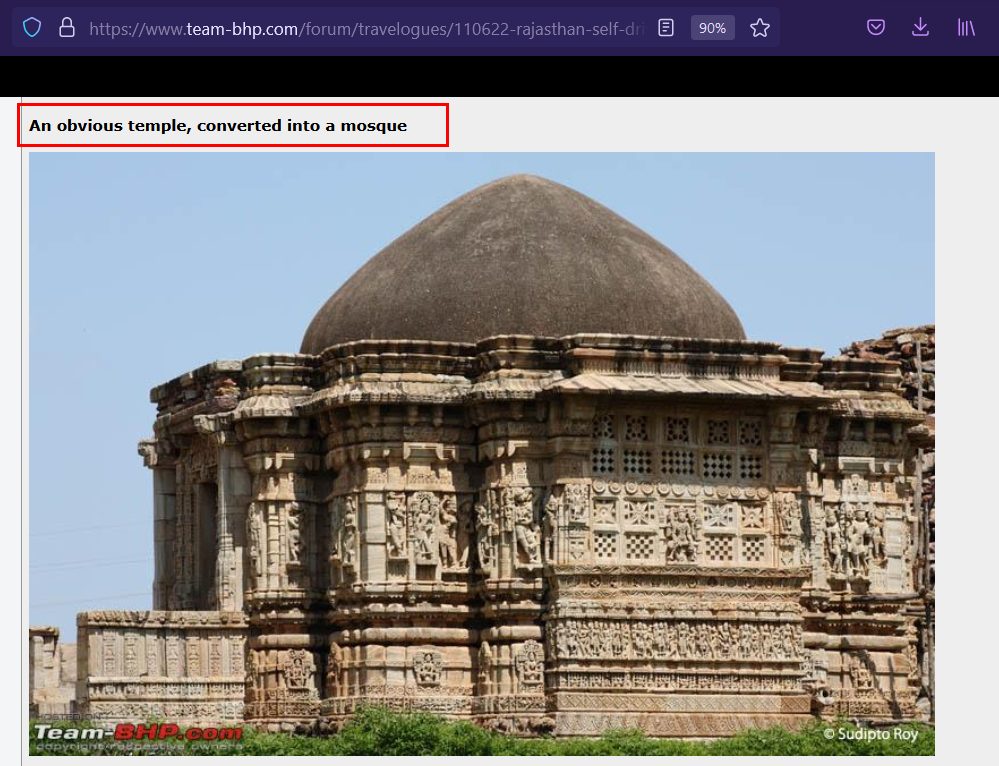
Photos preceding the viral image also suggested that this was in Chittor. Taking this as a clue, we performed a keyword search on Google and came across the same structure on Alamy. As per the description on Alamy, the structure is an old temple in the Rattan Singh Palace, Chittorgarh Fort, Rajasthan.
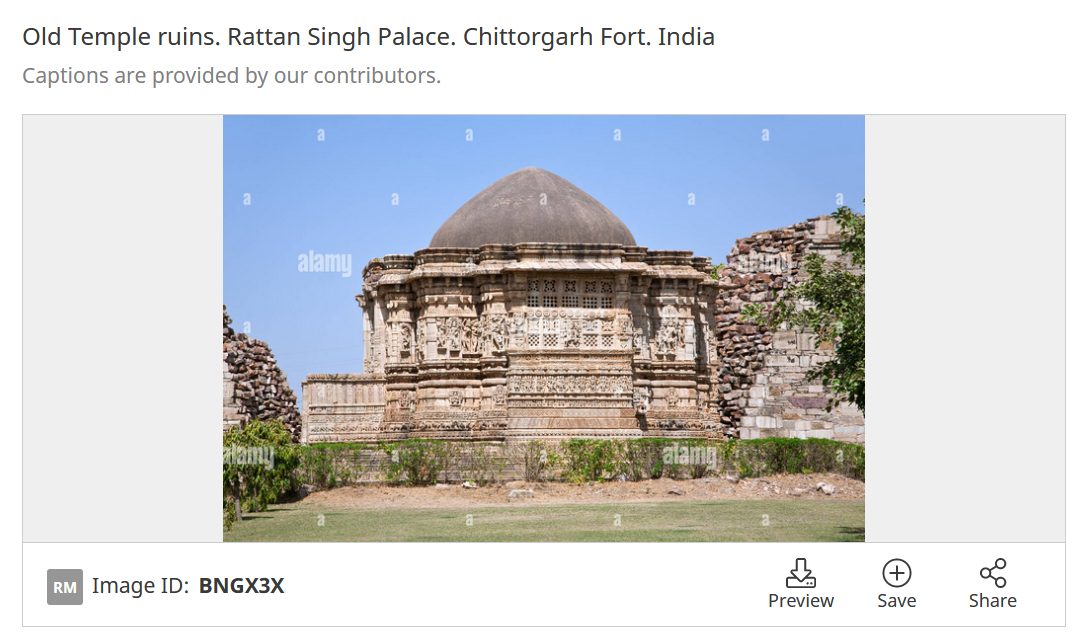
We performed a second keyword search and came across another photo showing the temple’s front part. As per the caption, this was an old Shiv temple in Chittorgarh Fort. We again performed a Google reverse image search which led to Wikipedia, according to which the name of the temple is “Shringar Chauri”.
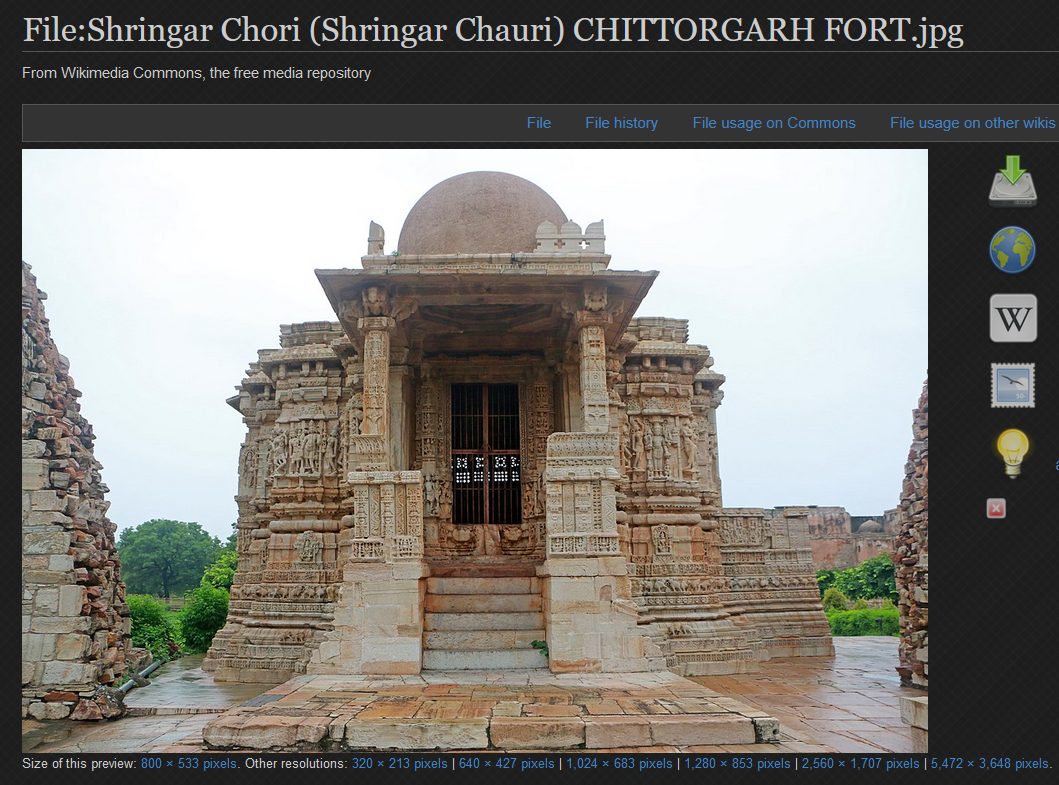
Using Google Earth Pro, we geolocated the temple at these coordinates 24°53’33.06″N, 74°38’40.47″E. Both the front and the back of the temple are visible on street view.
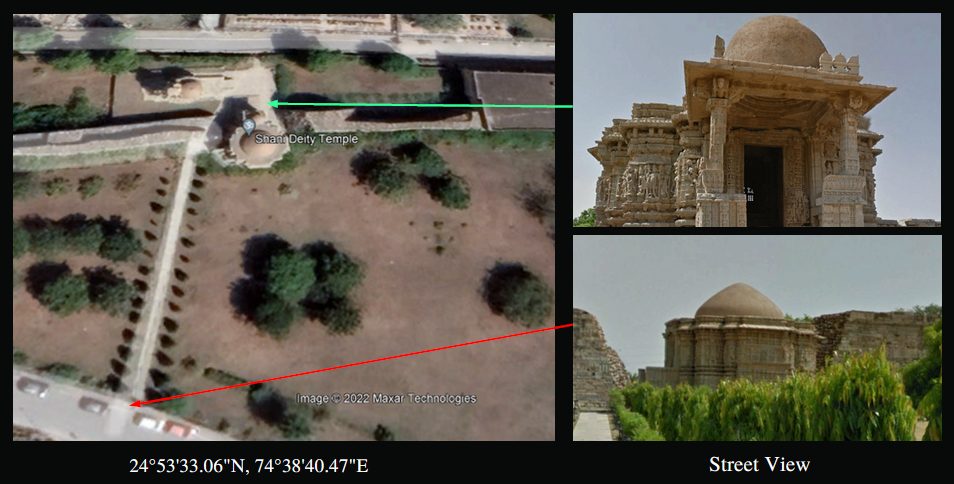
We also found a photo of the Shringar Chauri temple on ASI’s Jodhpur Circle website.
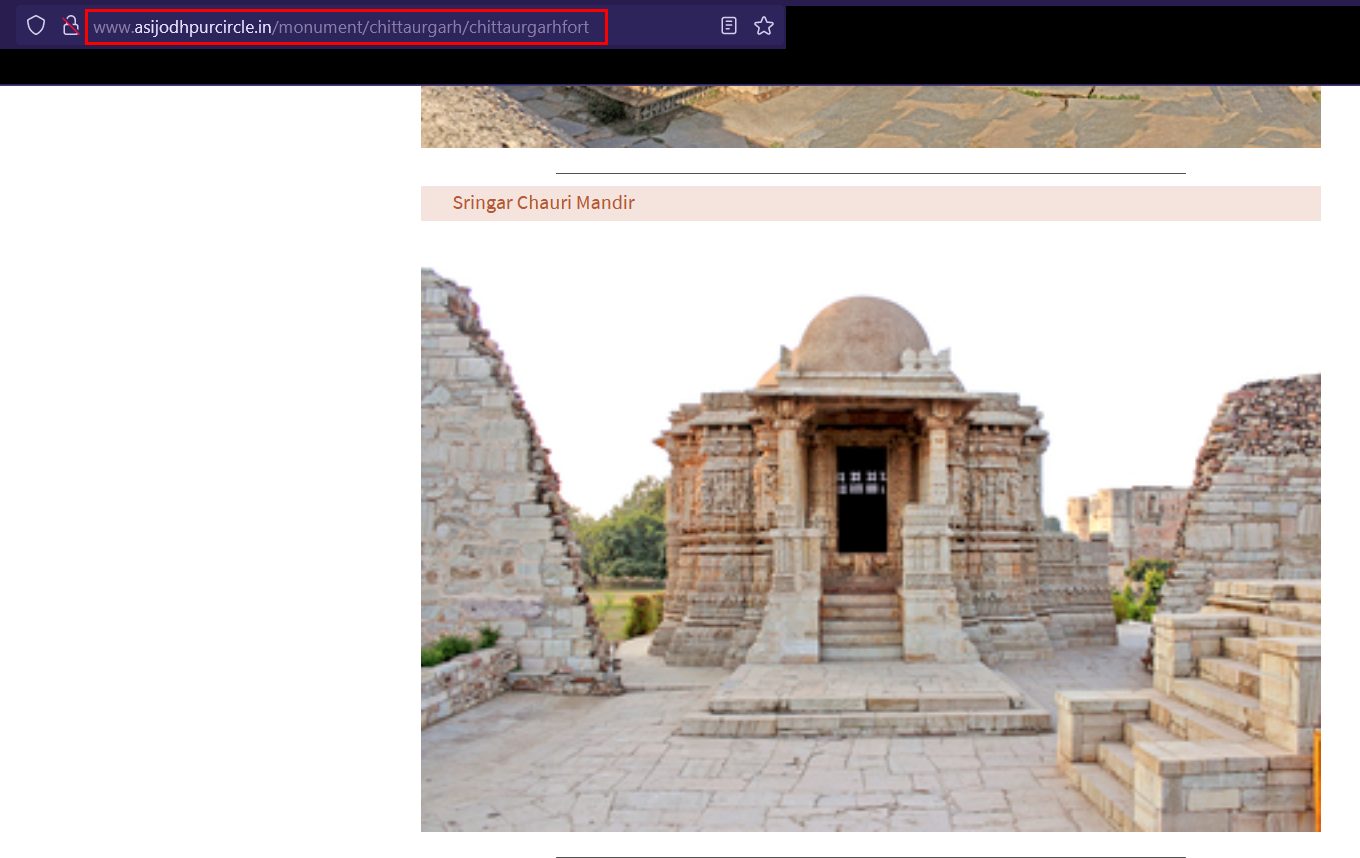
An official document of the ASI available on the website of the Indira Gandhi National Centre for the Arts (IGNCA), describes Shringar Chauri as a Jain Temple built in 1448 by Velaka, son of Kola, the treasurer of Maharana Kumbha.
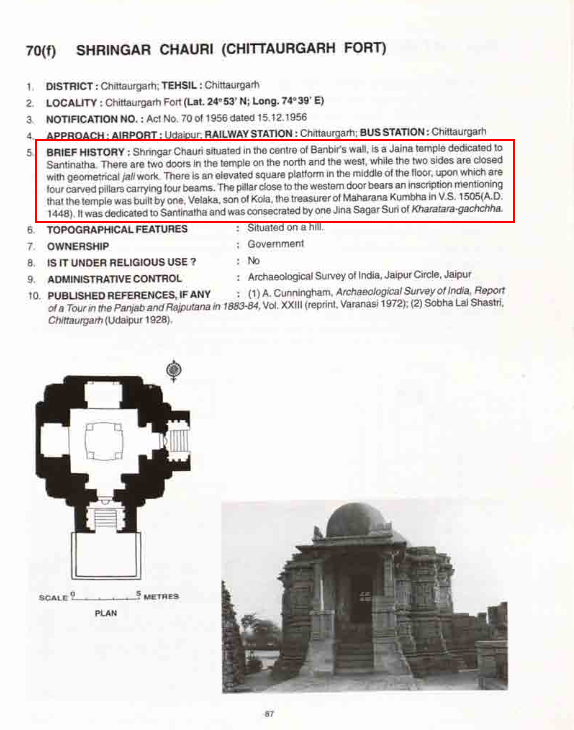
Similarly, in the book “Archaeological Survey of India: Report of a Tour in the Panjab and Rajputana in 1883-84, Vol. XXIII“, author A. Cunningham wrote, “Midway between magazine and bastion is a carved stone temple now called the Sringar-Chauri…built by the Jain treasurer of Rana Kumbha”. This suggests that at some point, the temple was known by a different name to the locals. 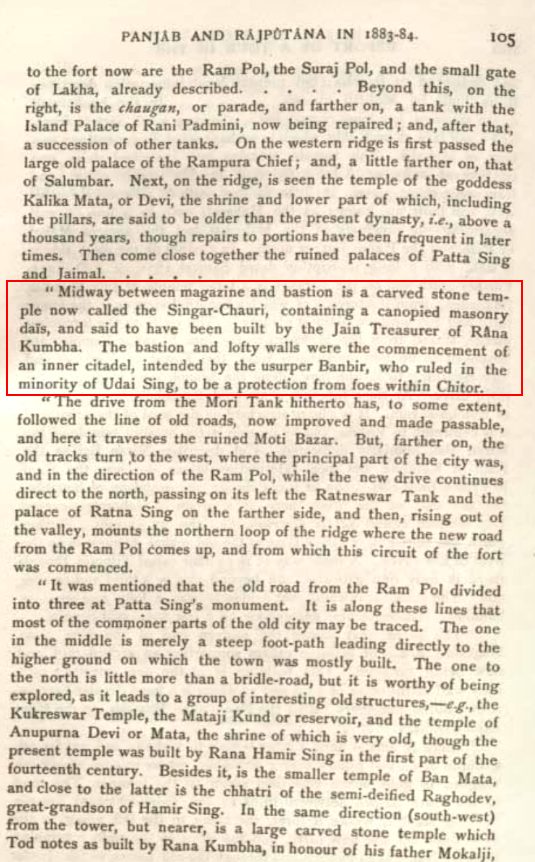
It is also important to note that there are many temples in the area that have domes on top of them. Domes appear to be a common feature of temples in the area.
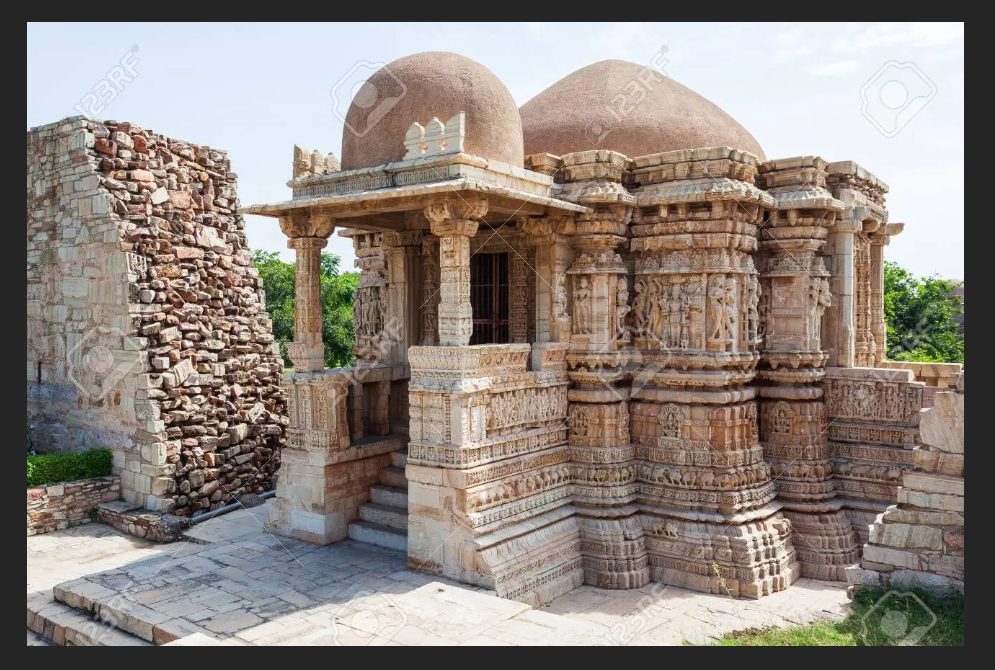
Alt News reached out to Professor MK Pundhir who is an expert on Medieval Archaeology in the Department of History at Aligarh Muslim University. He said, “Whenever the fort was captured by anyone in power, it was desolated. Despite this, there is no evidence to suggest that the Shringar Chauri temple was converted into a mosque by building a dome over it. Moreover, if this was the case, the Rajputs would have destroyed the dome whenever they gained control, as it symbolised alien power.”
Alt News also accessed the book ‘Chittorgarh’ published in 1928, compiled by Pt. Shobalal Shastri. The book has a dedicated chapter on Shringar Chauri and it suggests that the temple was originally built in 1277 by King Ratan Singh but was destroyed in the first siege of Chittor (1303) and was reerected by Treasurer Velaka in 1448. There is no mention of it being converted into a mosque.
To conclude, the claim that the Shringar Chauri Temple was converted into a mosque is baseless. The claim is part of a series of conspiracies suggesting that ancient Hindu structures across India have been desolated by invading powers and mosques have been built on top of them.
Independent journalism that speaks truth to power and is free of corporate and political control is possible only when people start contributing towards the same. Please consider donating towards this endeavour to fight fake news and misinformation.




